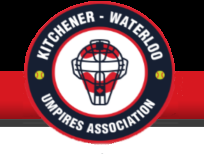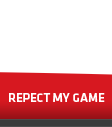Umpire Development
Click on Softball Canada Rule Changes Link
Softball Canada Rule Changes
Click on Softball Ontario Umpire Clinics Link
Softball Ontario Clinics Listing
Minor Umpire Development Program
KWUA umpires always strive to be the best that they can be and are committed to the objective of continuous improvement. That commitment includes:
- Certification in the Softball Ontario umpire program.
- Formal on-field evaluations by Softball Ontario evaluators.
- On-going self-evaluation and post game debriefs with umpire partners and mentors.
- Learning and improving with every pitch, every game, every week, every month.
The KWUA supports the KW Minor Softball Associations with their house league umpire program by:
- Providing instructors for informal umpire clinics
- Conducting on-field evaluations and support for house league umpires
- Encouraging KWUA umpires to serve as mentors for house league umpires
Are you an umpire, coach, or player that is having difficulty understanding a rule? Are you having trouble with coaches on the diamond and need some advice? See the Casebook below with answers to your questions.
More Umpire Training Information
Another resource that you can use is a set of training tutorials created by the American Sport Education Program. There is information about Umpires' Pregame Conference, Preparing for the Pitch, Knowing When to Sell It, and Play Ball! Top of the Fourth.
ASEP Softball Website
Ask the Umpire Casebook
Updated: May 2, 2010 (Q. 8)
Question 1: Ground Rule Double
Question: We had bases loaded and a hit in the gap between the center and right fielders. The ball rolled to the fence and, with all runners circling the bases and lots of shouting by fans & players, the centre fielder ran to the outfield fence and then put his hand in the air without picking up the ball. What should I as the umpire do?
Answer: Prior to the game, at the plate conference meeting (and especially if there are holes under the fencing) remind the coaches that, if a ball rolls out of play that the fielder should not play the ball but should signal (with hand it the air) that the ball has gone out of the playing field... and that, if the fielder does play / reach for the ball, that you will be letting runners run and score.
If the fielder remains with his hand in the air and does not play the ball, after all runners have stopped (scored), the base umpire should go out and confirm that the ball has rolled out of play. If the base umpire sees that the ball has rolled under or got caught in the fencing, he should rule a ground rule double. The batter will be placed at second base and no runners can advance more than two bases.
Be careful not to rule dead ball too soon... go out and check before ruling ground rule double.
NOTE: It will be tempting to kill the play (Dead Ball) when the fielder signals with arm in the air. However, it is safest to let play continue and check after all runners have scored. You can always place them after ruling a ground rule double. Avoid getting caught up in the emotions and cheering that will be happening in this situation.
Question 2: Coaches Interference
Question: Does a coach need to move when a ball is hit towards him/her in the coach's box?
Answer: Yes. The coach must be in the coach's box, but if a foul ball is hit towards them they are required to move. If the coach does not move and gets in the way of a defensive player making a play on the ball then interference is called and the batter is called out.
For example, a pop fly is hit into foul territory around the coach's box. Instead of moving the coach ducks and the first baseman runs into the first base coach, leading to the ball falling out of the first baseman's reach. The result is the umpire calls a "dead ball",the batter is called out, and all previous runners return to their location at the time of the pitch.
Question 3: Backing-up towards home
Question: When I was umpiring last week there was a bunt where the first baseman plays the ball and goes to tag the batter-runner between home plate and first base. While attempting to avoid the tag, the batter-runner stops and takes a step backwards towards home plate. What is the ruling on the field?
Answer: Between home plate and first base all movements by the batter-runner MUST be towards first base. As a result, the plate umpire immediately calls "dead ball". The batter-runner is called out and all runners return to the base they held at the time of the pitch.
Note: The batter-runner may stop or even lean back away from the fielder without penalty but as soon as the player takes a step backwards the play is dead and the ruling is enforced.
Question 4: Designated Player (DP)?
Question: Is a team able to use the DP when there is only 9 players?
Answer: No, you must have 10 players when deciding to use a DP and Flex.
Question 5: Dead Ball Situation
Question: Are situations such as a leadoff, or an illegally batted ball an immediate dead ball?
Answer: Yes. In both situations the umpire should immediately declare "DEAD BALL". You then report any necessary ruling. For example, in a leadoff situation you yell loudly "DEAD BALL, leadoff (pointing), runner's out, no pitch!"
Question 6: Interference Situation
Question: What is the ruling when given the following situation?
R1 and R2. BR hits a shot to the gap that rolls to the fence. He gets a triple. As the throw comes in from left-center, it goes over the head of the 3rd baseman. The park is totally fenced in and has gates to the dugouts. As the throw comes to the gate, the batter (inthe hole) opens the gate and the ball rolls into dugout.
Answer: He says the ball would not have gone out of play if the player had not opened the door to the dugout. I would use Rule 10-1k which says an umpire should not enforce a penalty when imposing the penalty is to the advantage of the offending team. The offensive team caused the ball to go out of play by opening the gate so if we impose the penalty they would gain the advantage because it is a blocked ball and the penalty is 2 bases from the last base touched at the time of the throw. Rule 8-7g effect 7g 1a. We now need to decide what to do. Again we go to Rule 10-1 Powers and duties of the umpires. In Rule 10-1 it gives the plate umpire powers to make decisions on situations not covered by the rules. In this play we would call the ball dead and send all runners back to the last base touched at the time the ball became dead. If the umpire felt a fielder may have an opportunity to make an out on the over thrown ball they may call interference and call the runner closest to home plate out. In this play it does not appear to be the case.
Question 7: Interference on Batter During Stolen Base
Question: Runner at 3rd. Pitcher pitches a passed ball and it stops at the back screen. Catcher goes to get the ball. Runner runs in from 3rd. The catcher tries to throw the ball to the pitcher who has come to home plate to tag the runner from 3rd. The catcher goes to throw the ball but stops because the batter is in the way. Is this interference?
Answer: First, interference can only be called if a throw is made in an attempt to throw out the runner stealing the base.
If the throw is made and the umpire determines that interference has occurred the umpire will call "dead ball" and declare the batter out. The runners will return to the base they occupied at the time of the pitch.
Question 8: Foul Tip #1
Question: The count is 2-2, and a foul lines off the bat directly into the equipment of the catcher. Before the ball hits the ground the catcher gets the ball into the glove. Is this considered a foul tip for the 3rd strike?
Answer: This is considered a foul ball not a foul tip as the ball did not go directly from the bat to the glove
Question 9: Foul Tip #2
Question: The count is 2-2, and a foul lines off the tip of the glove, off the chest protector, and back into the glove without touching the ground. Is this considered a foul tip for the 3rd strike?
Answer: This is considered a foul tip as the ball went directly from the bat to the glove and did not touch the ground.
|










